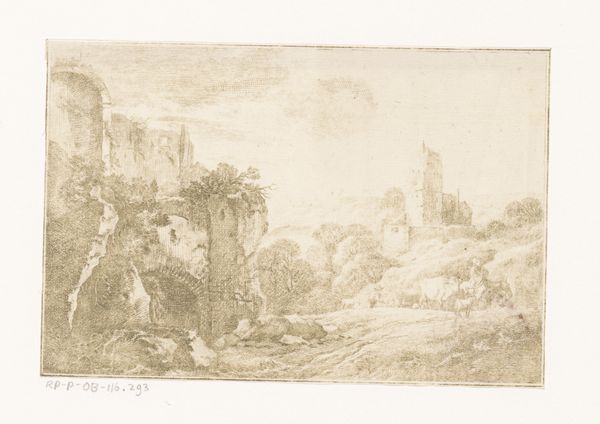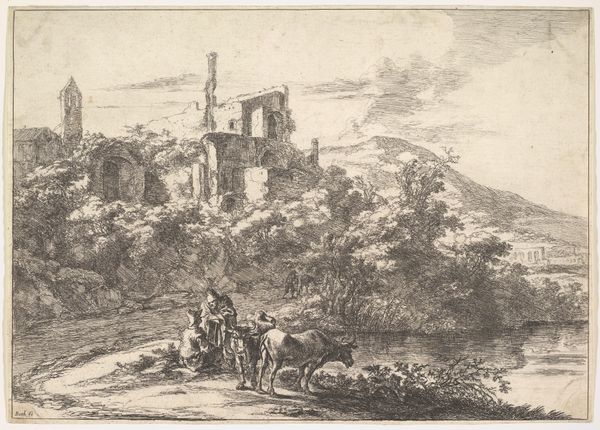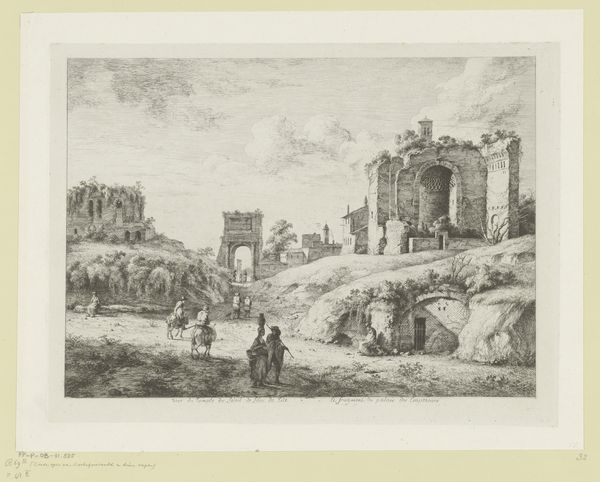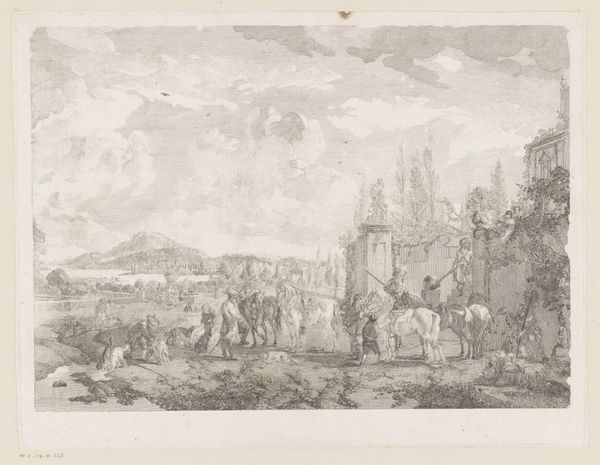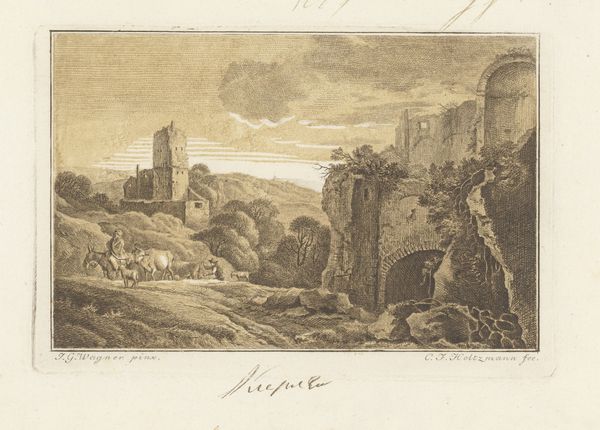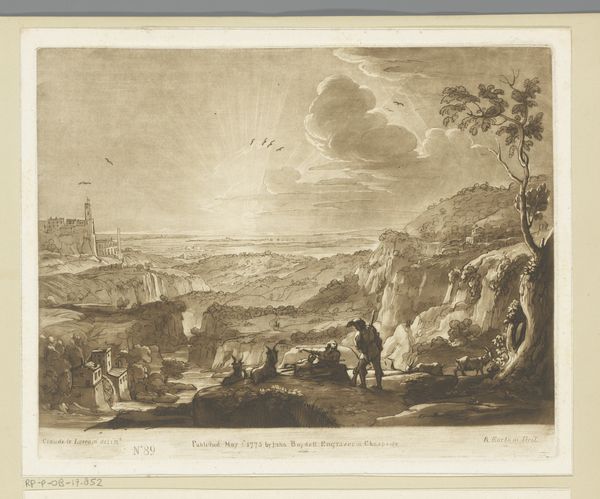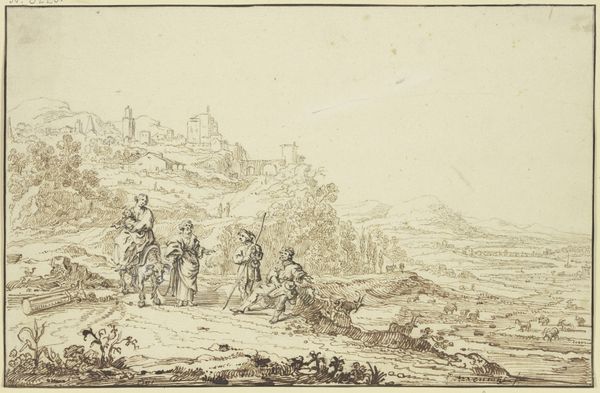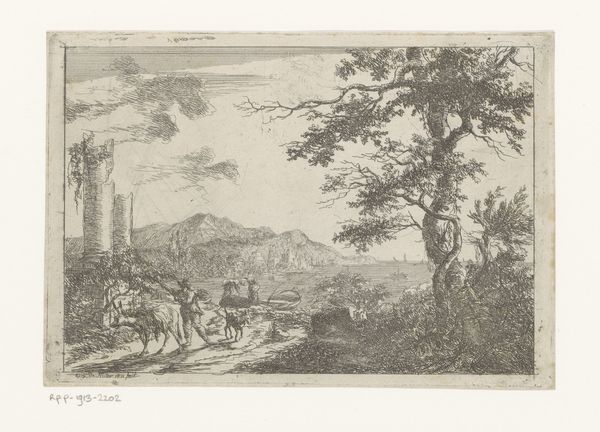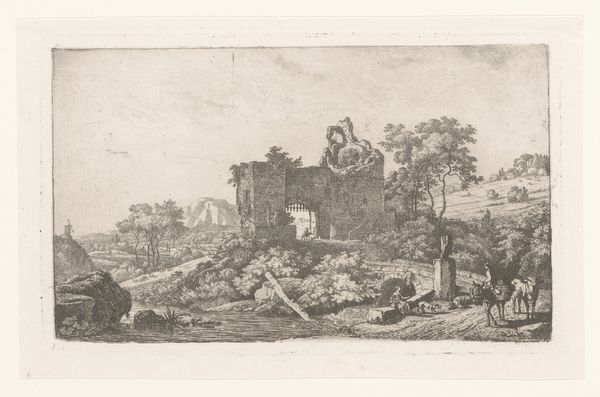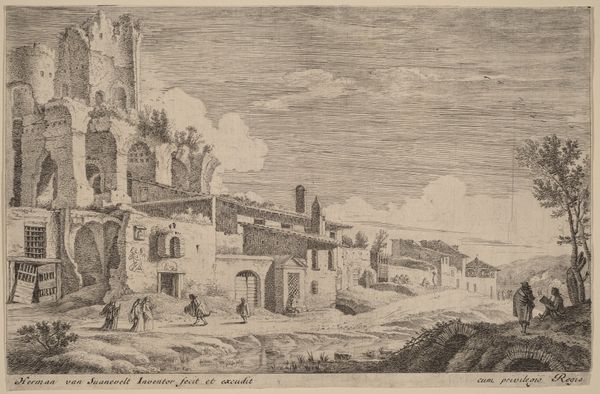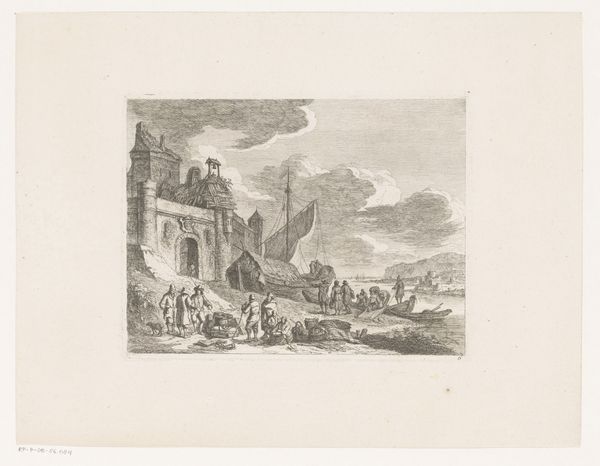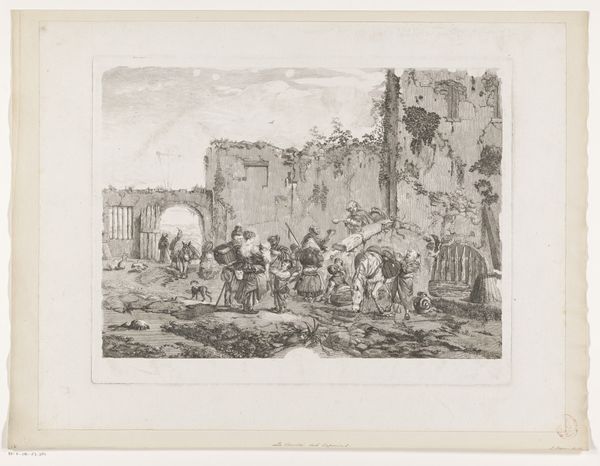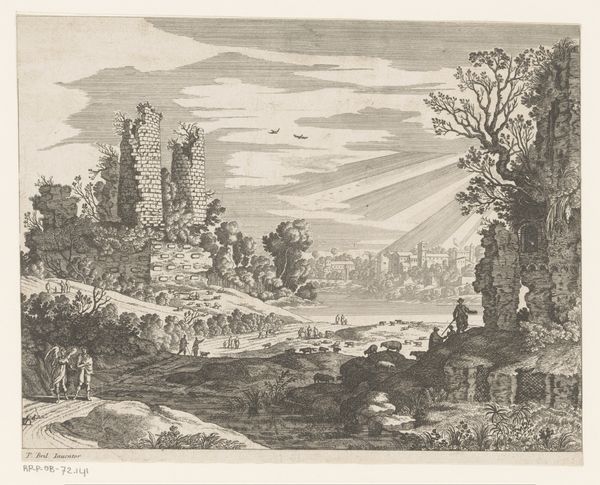
Dimensions: height 93 mm, width 140 mm
Copyright: Rijks Museum: Open Domain
Curator: This etching is called "Landschap met ruïnes en herder met vee" or "Landscape with Ruins and Shepherd with Cattle," created between 1750 and 1811 by Carl Friedrich Holtzmann. Editor: Mmm, there’s a serene sort of stillness here, despite all those crumbling stones. It’s like time is just exhaling gently through this landscape. I get the distinct impression of an era slowly passing away. Curator: Holtzmann, active during the period when Romanticism was gaining traction, frequently incorporated historical themes in his landscapes. You see that contrast so common during the time period where images and objects related to both past and future visions occupied a central place in popular thinking. Editor: Yes, there is a definite contrast there. I’m immediately drawn to those ruins. It’s as if the buildings have stories etched into them just as vividly as the artist has here, they are reminders of power now softened by nature. Almost dream-like… makes you think about how permanent is permanent. Curator: Landscape prints such as these gained popularity among a growing public during the 18th century, fueled by burgeoning markets and a fascination with the aesthetics of picturesque decay, like a visual metaphor for mortality. Holtzmann and his peers are feeding this fascination. Editor: I like the delicate hatching. The level of detail is wonderful considering that all of this comes from etching! Even with its monochromatic palette, there’s a luminosity to the overall piece… as if the sun itself were fading slowly out of a perfect azure sky. The lines really work in harmony. Curator: What I think we're seeing here is Holtzmann's engagement with historical narrative—with how it shapes both our perception of landscape and of history itself. It reminds viewers that grand narratives give way and get consumed by larger societal transformations. Editor: The beauty and sadness in it just lingers. Holtzmann gave me quite a bit to think about during these last two minutes... Curator: And he offered society a new way of seeing itself by romanticizing what society leaves behind... it's the paradox of modernity, if you think about it.
Comments
No comments
Be the first to comment and join the conversation on the ultimate creative platform.
